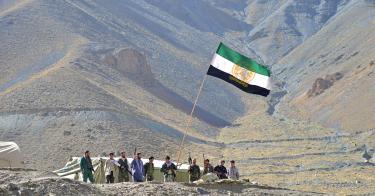The Afghanistan fiasco was totally avoidable. Had President Biden listened to his military advisers and kept a small troop presence, coupled with U.S. air support to the Afghan military, the Taliban would not be in power today.
Unfortunately, the president did not heed their advice, and now the Taliban control more of Afghanistan than they did in 2001. But while most of the Afghan army has melted away, not all Afghans have capitulated to the Taliban.
>>> How the U.S. Can—and Why It Must—Support Afghanistan’s National Resistance Front
Today, the Taliban face armed resistance in the Panjshir Valley. While the odds are stacked against the newly formed National Resistance Front (NRF) of Afghanistan, their situation is still interesting enough for U.S. policymakers to watch.
The Panjshir Valley is famous for its ability to resist outside aggression. The predominantly ethnic Tajik region, located 60 miles northeast of Kabul, features rugged mountains and valleys. This unforgiving terrain gives its defenders a tremendous “home-field” advantage. During the 1980s, the Soviet army made numerous attempts to capture Panjshir, only to come away with nothing. While the Soviets could capture much of the main valley and its villages, they always failed to capture the side valleys which sheltered the resistance.
In the 1990s, after the Taliban first swept into Kandahar and Kabul, the resistance movement began in the Panjshir Valley. The leader of this resistance, Ahmad Shah Massoud, famously stated: “I will resist even if the last region left is the size of my hat.” Massoud was assassinated in Takhar province by al-Qaeda two days before the Sept. 11, 2001, attacks on America.
Today, the late Massoud’s 32-year-old son, Ahmad Massoud Jr., is leading the new anti-Taliban resistance. The younger Massoud was only 12 when his father was assassinated. While he did not enter Afghan politics in any meaningful way until 2019, he has put a lot of effort over the years into building and expanding a bottom-up grassroots movement in Panjshir. This is paying off for him now. He has a broad following because of his father’s legacy.
The exact number of former Afghan soldiers, commandos, and police that have made it to Panjshir to join the NRF is unknown, but it may range as high as 10,000 fighters. The Taliban have encircled the region and captured large sections of the main valley. However, it is estimated that the NRF controls all the crucial side valleys, which make up about 60% of the province.
Right now, the NRF is in a defensive mode. The focus is not to take on the Taliban, but to make it through winter. That will give it time to consolidate and organize and be better prepared to resist the Taliban come spring.
While the region’s history is encouraging, the current circumstances are not. The NRF faces a determined and emboldened enemy. Meanwhile, the resistance leaders feel abandoned by the international community, especially the U.S. The Biden administration’s precipitous and chaotic withdrawal has not left many good policy options to pursue in Afghanistan.
>>> In Afghanistan Evacuation, Air Force Once Again Rises to an Enormous Challenge
The most immediate thing the U.S. can do to help the NRF is to lead an international effort to block recognition of the Taliban as the legitimate government of Afghanistan.
A Taliban-controlled Afghanistan is antithetical to America’s interest and a threat to human rights throughout the country. With the Taliban in control of Kabul and the emergence of a resistance movement in Panjshir, Afghans and the international community find themselves in a situation quite similar to that of the mid-1990s.
If past is prologue, it is almost inevitable that other resistance movements will spring up elsewhere in Afghanistan, making it extremely difficult for the Taliban to control and govern as they wish. The U.S. should start engaging with resistance movements in Afghanistan, and right now the only viable one is the NRF.
This piece originally appeared in The Washington Times



